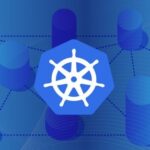Introducing pods
Pod is a co-located group of containers and represents the basic building block in Kubernetes. Instead of deploying containers individually, you always deploy and operate on a pod of containers. We’re not implying that a pod always includes more than one container—it’s common for pods to contain only a single container. The key thing about pods is that when a pod does contain multiple containers, all of them are always run on a single worker node—it never spans multiple worker nodes.
Understanding why we need pods
But why do we even need pods? Why can’t we use containers directly? Why would we even need to run multiple containers together? Can’t we put all our processes into a single container? We’ll answer those questions now.
UNDERSTANDING WHY MULTIPLE CONTAINERS ARE BETTER THAN ONE CONTAINER RUNNING MULTIPLE PROCESSES
Imagine an app consisting of multiple processes that either communicate through IPC (Inter-Process Communication) or through locally stored files, which requires them to run on the same machine. Because in Kubernetes you always run processes in containers and each container is much like an isolated machine, you may think it makes sense to run multiple processes in a single container, but you shouldn’t do that.
Containers are designed to run only a single process per container (unless the process itself spawns child processes). If you run multiple unrelated processes in a single container, it is your responsibility to keep all those processes running, manage their logs, and so on. For example, you’d have to include a mechanism for automatically restarting individual processes if they crash. Also, all those processes would log to the same standard output, so you’d have a hard time figuring out what pro- cess logged what.
Therefore, you need to run each process in its own container. That’s how Docker and Kubernetes are meant to be used.
Understanding pods
Because you’re not supposed to group multiple processes into a single container, it’s obvious you need another higher-level construct that will allow you to bind containers together and manage them as a single unit. This is the reasoning behind pods. A pod of containers allows you to run closely related processes together and pro- vide them with (almost) the same environment as if they were all running in a single container, while keeping them somewhat isolated. This way, you get the best of both worlds. You can take advantage of all the features containers provide, while at the same time giving the processes the illusion of running together.
The above explanation is from the book Kubernetes In Action by Marko Lukša.
Know about “How pods logs are managed in kubernetes” – Click Here





Pingback: Why pod introduced in Kubernetes? - MtroView